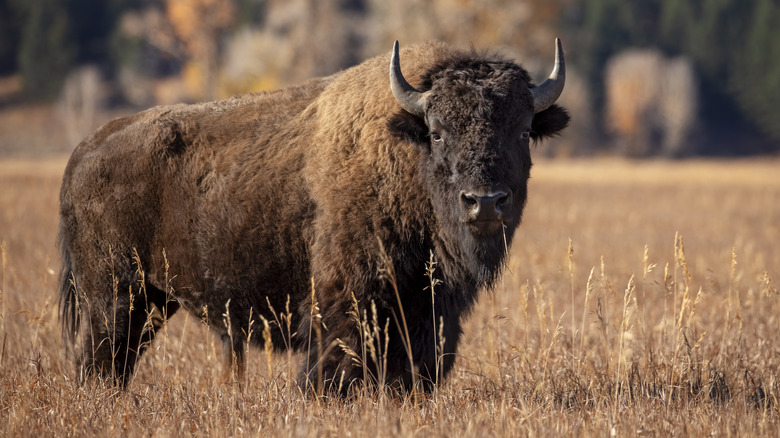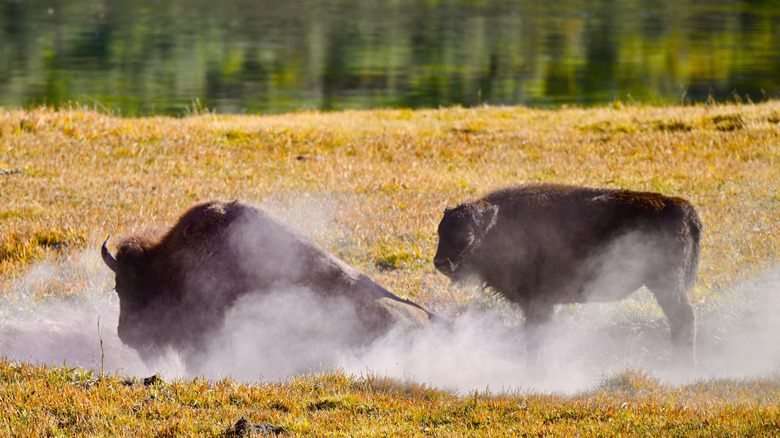The Heartwarming Discovery Researchers Made About Yellowstone's Bison After 120 Years
The American bison was once a flourishing species, with an estimated population of 60 million before the 18th century. By the start of the 19th century, that population would go down to an estimated 400, with the fur trade and active efforts to deplete Indigenous people's food sources leading to a hundred years of unprecedented slaughter. While the bison has been able to recuperate across Canada and the U.S., the Yellowstone American bison, the only wild population of Bison in the U.S., paints a particularly heartwarming picture of the animals' resilience.
In January 2025, researchers at the Texas A&M College of Veterinary Medicine and Biomedical Sciences (VMBS) published a study in the Journal of Heredity demonstrating how the Yellowstone bison has rebounded from an initial population of only 23 survivors in the 1900s. The study revealed that the continual increase in numbers, from a small population of 1,000 in 2014 to a 2024 estimate of 5,400, now comes from a single herd, which acts as two subunits within the park. With the Yellowstone herd's population essential to the continued conservation efforts of wild bison, the herd's ability to grow as a singular unit and build its numbers is a promising sign for its genetic longevity.
It's remarkable how wild bison populations almost rivaled livestock, such as the adorable and playful cow, which actually make great pets and stand at 86.7 million. The modern bison exemplifies perseverance and demonstrates how they once dominated the North American plains. Still, the bison's continued admiration and cultural significance have been integral in ensuring the species remains protected through conservation efforts.
The bison remains integral to Indigenous people and American culture
The bison was integral to the Indigenous people who relied on the animal for food, shelter, clothing, and religious ceremonies. As populations dwindled, those tribes that were overly dependent on the bison experienced drastic changes to their economy, infant mortality rates, and even average height, all of which were affected by the bison's culling.
Due to the bison's cultural significance, early conservation efforts began in 1905, with Indigenous people, ranchers, and the government working together to preserve the species. While many Indigenous communities still feel the effects, the once-dominant large mammal has become a symbol of perseverance. Nick Tilsen of the Oglala Lakota Nation told PBS how the bison reflect their plight, "What if our best days are not behind us, but ahead of us?" From its estimated total population of 400 at the start of the 19th century, there are now 192,477 bison registered in the U.S. and 149,539 in Canada.
Continued conservation efforts are needed to ensure the future prosperity of the bison. Those interested can look for conservation organizations, including Indigenous-led ones, to help raise awareness or volunteer to assist in protecting the bison population. Thankfully, the heartwarming story of the last remaining wild bison thriving as a single unit in Yellowstone paints a positive picture of the majestic creature's future. If you want more stories on the remarkable perseverance of nature, check out the California animal species being called "nature's Swiss army knife" which is exploding in population, or the land animal that became a new parent at an age humans can only dream of.

